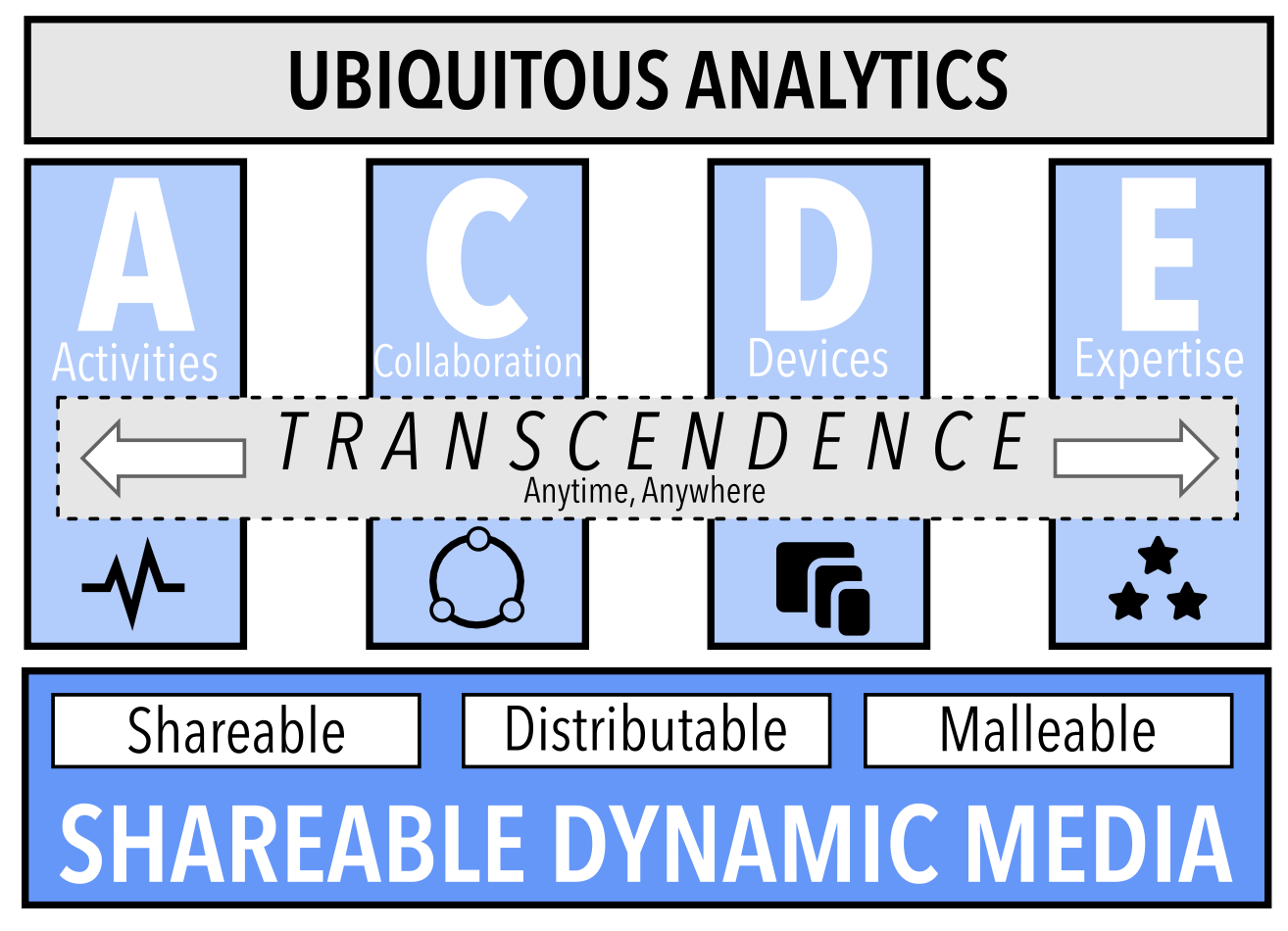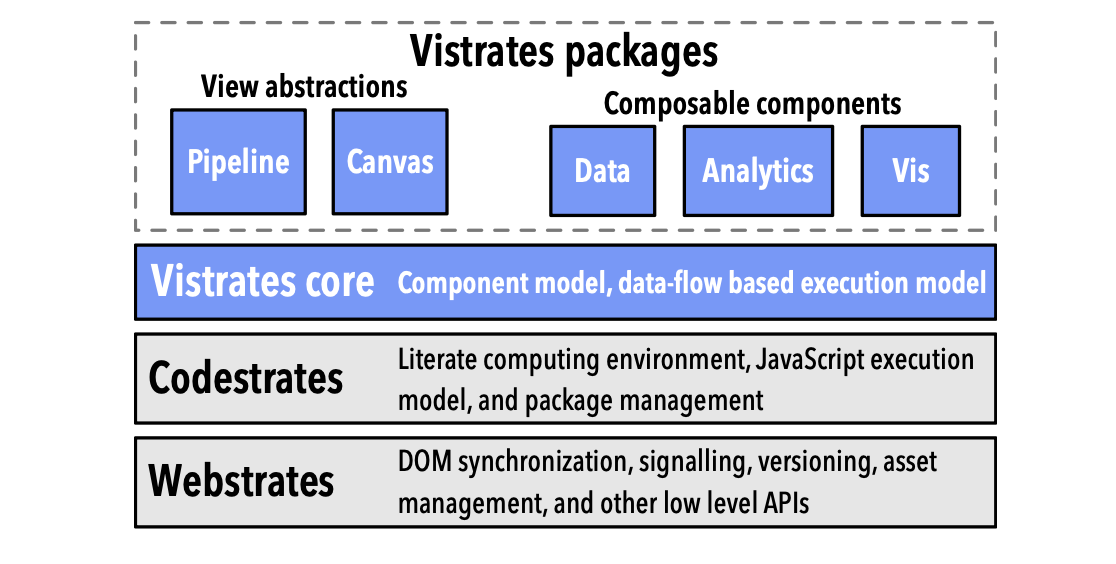Andyʼs working notes
About these notesBadam, S. K., Mathisen, A., Radle, R., Klokmose, C. N., & Elmqvist, N. (2019). Vistrates: A Component Model for Ubiquitous Analytics. IEEE Transactions on Visualization and Computer Graphics, 25(1), 586–596
This paper reports on a system which builds on Codestrates (Rädle, R., Nouwens, M., Antonsen, K., Eagan, J. R., & Klokmose, C. N. (2017). Codestrates: Literate Computing with Webstrates. Proceedings of the 30th Annual ACM Symposium on User Interface Software and Technology, 715–725) to offer a modular data visualization pipeline. Components like CSV parsers, mapping views, and plotting tools, can be independently created and composed using the same principles of “sharable dynamic media” which characterize Webstrates.
There’s no significant change to the Webstrates conceptual model, but the “ubiquitous analytics” use case does demonstrate the strength and malleability of that medium:
The common thread in the scenario is a notion that we coin tran- scendence. Data analysis in the scenario goes beyond individual con- texts and applications to encompass a wide variety of analytical activ- ities (A), modes of collaboration (C), types of devices (D), and levels of expertise (E).
I infer from the paper that the case study described is hypothetical, and not tested in any real context.
Q. Give an example of how sharable dynamic media transcend levels of expertise.
A. A non-programmer can start working on a webstrate with existing components, then nudge a more experienced friend to build a component they’re missing, without changing paradigm.
